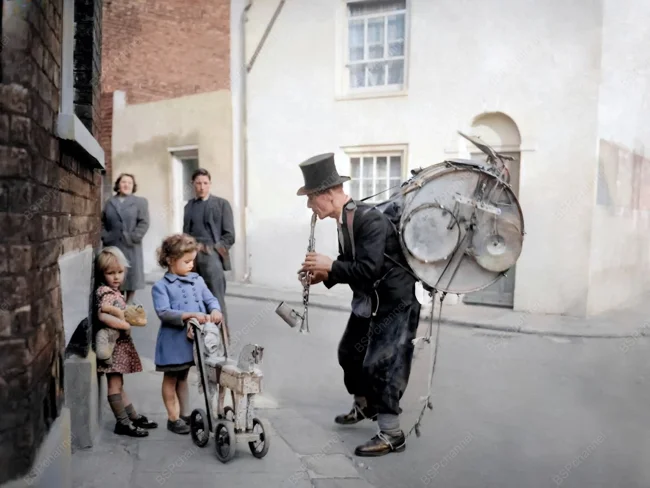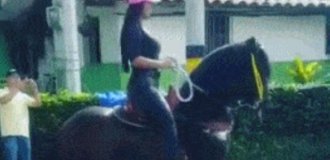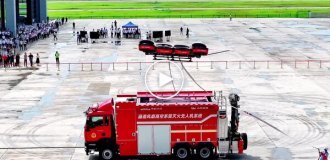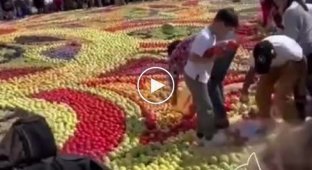Curious photos from the past of Great Britain (21 photos)
I present to you a selection of fascinating photographs from Great Britain, taken in the early and mid-20th century. These once black-and-white images have been colorized and now come to life with incredible depth and realism. 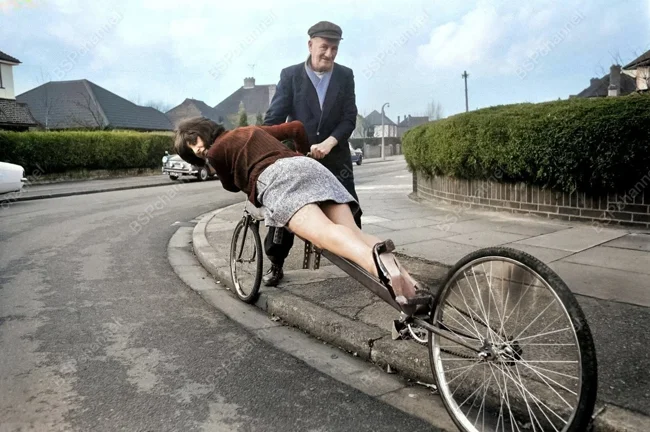
A young woman holds two enormous cabbages at an agricultural exhibition. Great Britain, 1922. 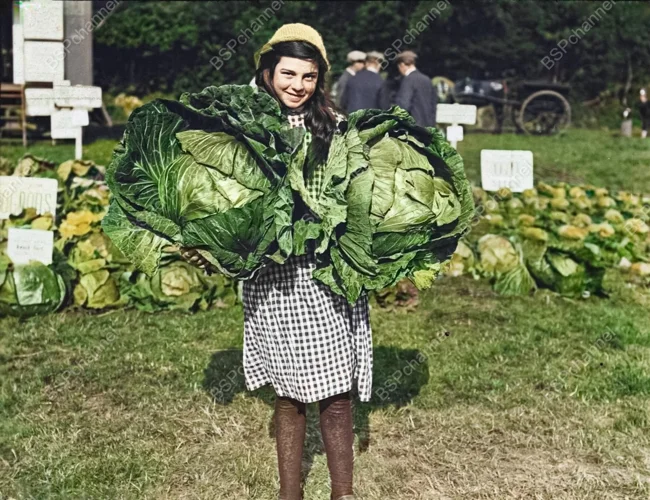
The first agricultural exhibitions around the world emerged around the 18th and 19th centuries, responding to the need to showcase advances in agricultural science, technology, and livestock breeding. They became an important tool for modernizing agriculture and sharing knowledge between farmers, scientists, and government agencies. The first official agricultural fair is believed to have taken place in England, the cradle of the Industrial and Agricultural Revolutions. In 1768, the first known agricultural exhibition, organized by the local Society for the Improvement of Agriculture, took place in Exeter, Devon. It showcased purebred animals, new agricultural machinery, and crop samples. Similar events soon began to be held throughout Britain: in London, York, and Manchester. Later, such exhibitions quickly spread across Europe.
Model Barbara Goalen wearing a Norman Hartnell dress on the embankment. London, 1951. 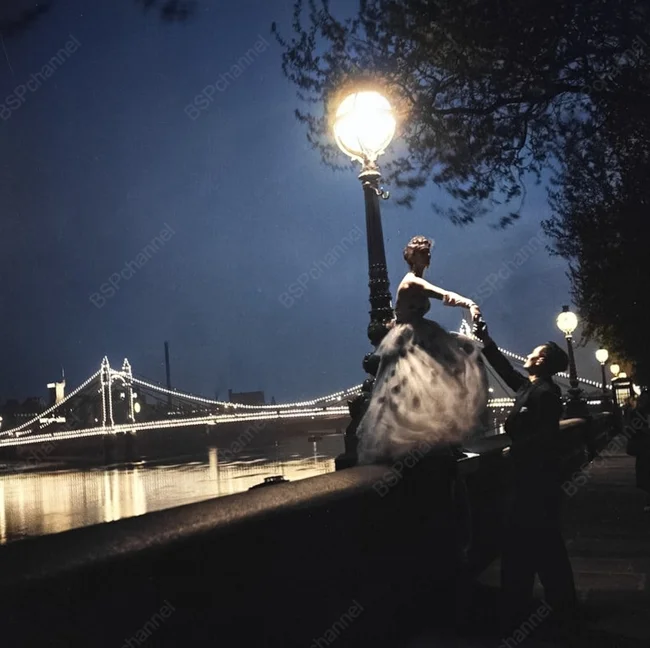
Photographer: Elsbeth Juda
Three women play diabolo while men try to fix a car. England, 1908. 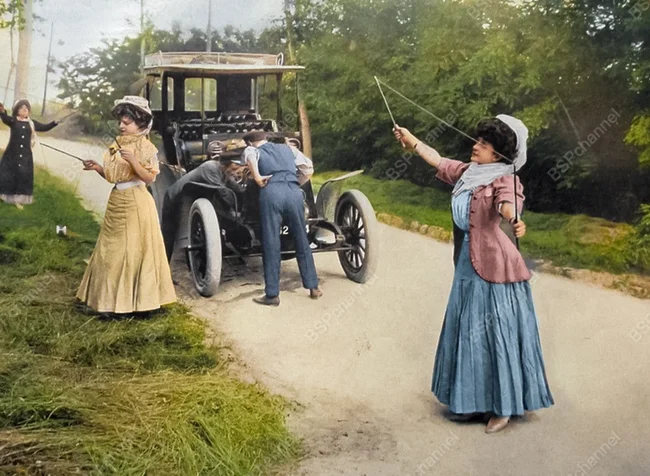
Diabolo is a fascinating and spectacular juggling game in which the participant controls a spinning "top" using two sticks connected by a taut rope. The name comes from the French word "diabolo," meaning "devil," reflecting the difficulty and guile of the game. The diabolo is a cone-shaped or barrel-shaped object, resembling two cones connected at the base. The player places it on a string stretched between the sticks and spins it using arm movements. The diabolo's momentum keeps it on the string and allows it to perform dozens of tricks: jumps, spins, throws over the head, under the feet, and catches it on the string from various heights. It originated in France in the late 19th century, although prototypes were known as far back as China and India. In the early 20th century, it became popular in Europe as a street entertainment. In the USSR, it became popular among circus and physical education enthusiasts.
The unusual bicycle of 73-year-old Patrick Thomas from Middlesex. England, 1972. 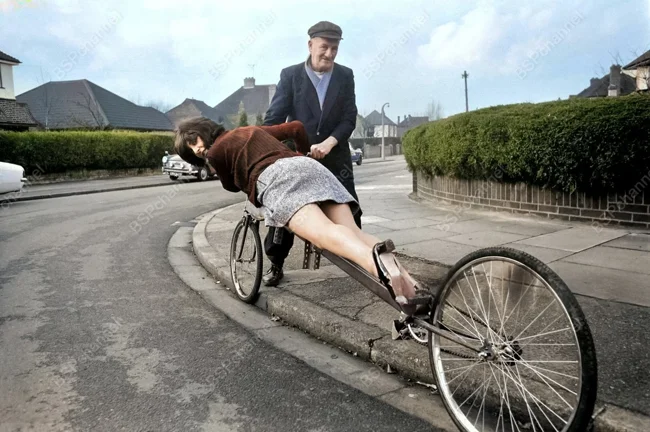
He claims that such a bicycle gives him extra speed due to reduced air resistance. However, as Joan Smith (the bicycle reporter) notes, if such models become widespread, women may experience certain inconveniences.
Beach in Bournemouth, 1952. 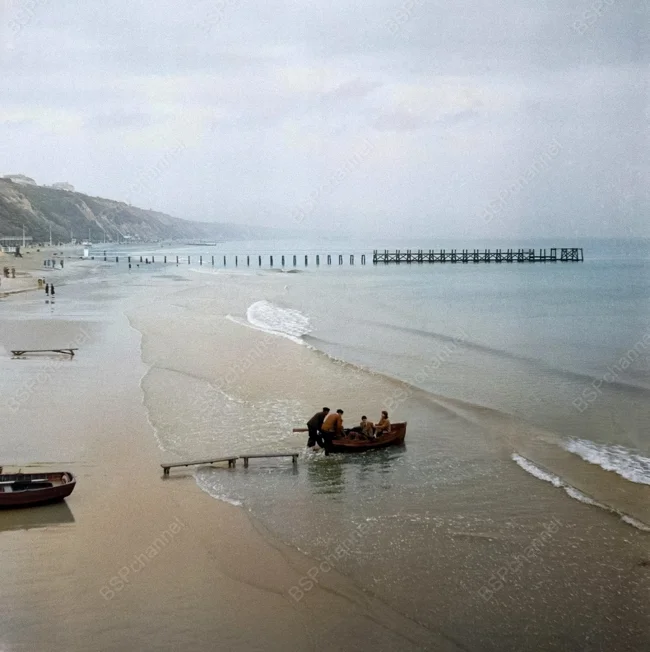
Bournemouth Beach is one of the main attractions on England's south coast. This picturesque town on the English Channel, located in Dorset, is renowned for its soft sandy beaches, well-maintained promenades, and warm climate—one of the most pleasant in the UK. Bournemouth Beach stretches 11 km along the coast, surrounded by green parks, palm-like yucca trees, and neat promenades. It regularly receives the Blue Flag award for its cleanliness, safety, and infrastructure.
Ratcatchers Jim Fortey and Alf Greenwin at South Tottenham Station, London, with their dogs and ferrets in cages, September 1941. 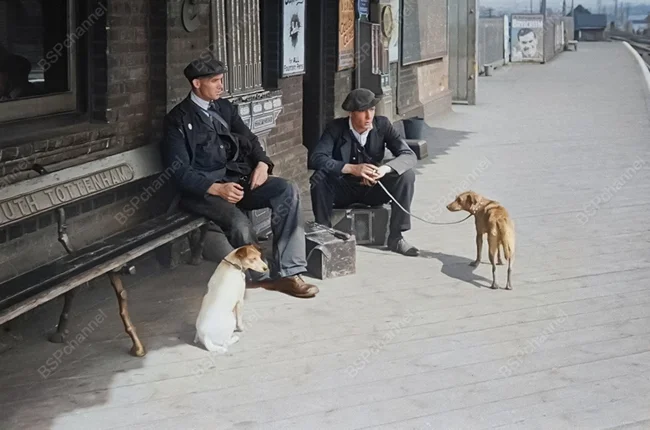
Photographer: Bert Hardy
Rat-catchers in England in the early 20th century were a profession few remember today, but in their time they played an important sanitary and even cultural role. During the era of industrialization and overcrowded cities like London, Manchester, and Birmingham, rats were a ubiquitous scourge. They swarmed narrow alleys, sewers, landfills, warehouses, and markets, spreading diseases, spoiling food supplies, and posing a public health threat. With poor public infrastructure and a lack of effective disinfectants, professional rat-catchers came to the rescue. These were often people from the lower classes: vagrants, veterans, and the unemployed. Some worked for municipal services, others for private contractors. The most famous used rat terriers—small, agile dogs trained to exterminate rodents. Rat-killing competitions were particularly popular: a dog had to kill as many rats as possible in a set time. Such "shows" were held in pubs and markets, sometimes with gambling. Although they seem cruel today, at the time they were seen as wholesome entertainment and a demonstration of the method's effectiveness.
Spinning machines. Kent, England, 1962. 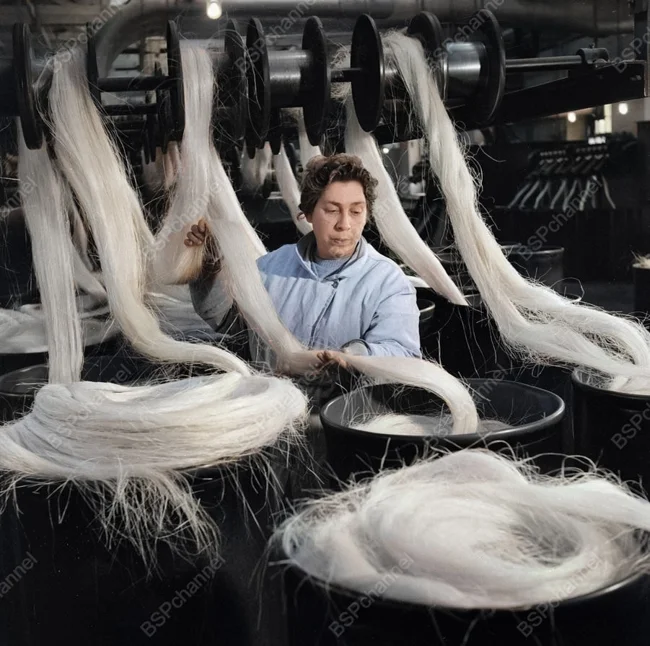
Photographer: John Drysdale
Austin 7 with a trailer tent. Great Britain, 1931. 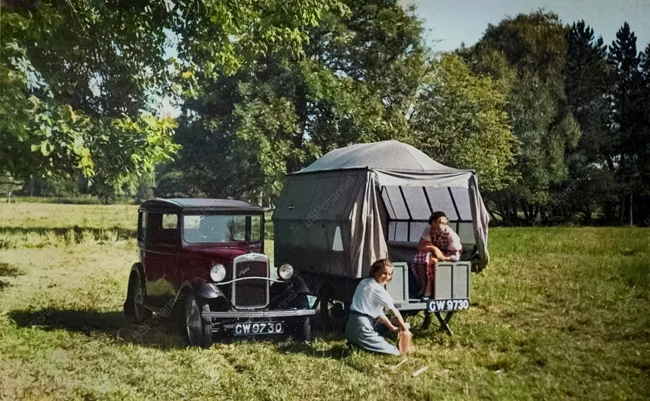
A United Dairies Ltd employee delivers milk and groceries on a four-wheeled cart. London, 1930s. 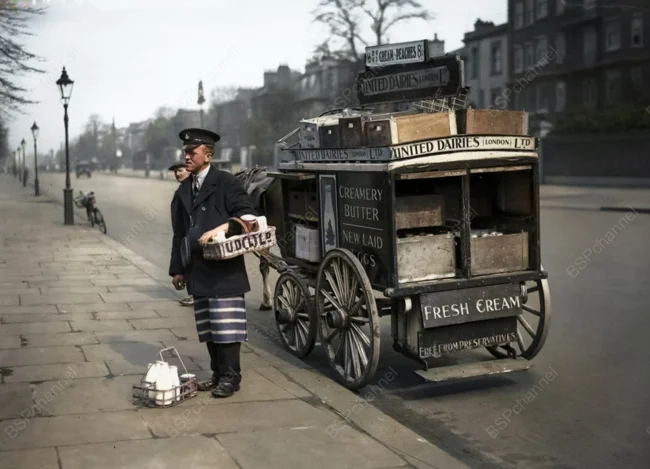
Milk delivery in London and other major English cities in the early 20th century was a daily ritual that became a symbol of British culture. Every morning, long before sunrise, the sound of a bell or the creaking of a wooden cart echoed through the quiet streets of the capital – a sign that the milkman was on his way. Milk was delivered directly to people's doorsteps, left in special milk bottles on the porch. Customers returned empty bottles to be washed and reused. Horse-drawn carts traveled the same routes for years. The milkman knew every family, every child, and could send greetings or notice if someone was sick. Where did the milk come from? Often, from cows living outside the city, in Surrey, Hertfordshire, or Bedfordshire. Some dairy farms were even located within London (for example, in Epping).
A girl relaxing in the sun. Margate, England, 1959. 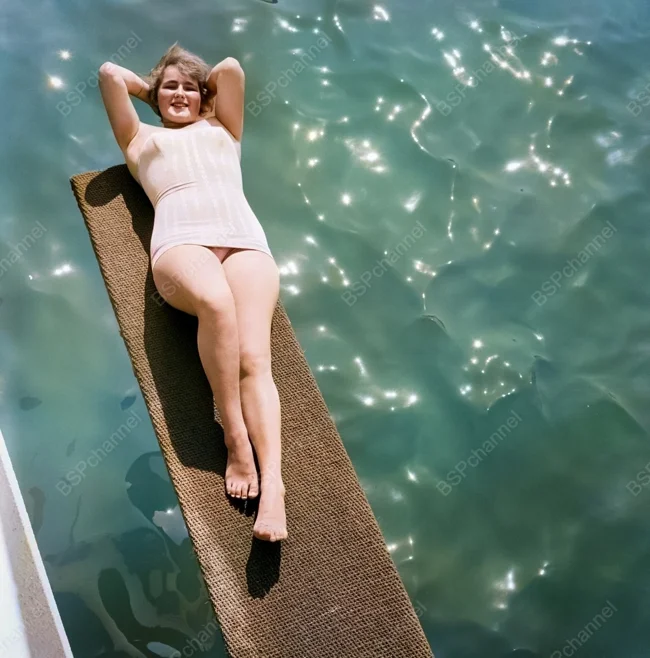
Photographer: Bela Zola
18-year-old Ann Malmqvist from Karlshamn, Sweden, came to England for a month to improve her English.
Scottish children cycling with a sidecar in Ballater, Aberdeenshire, 1931. 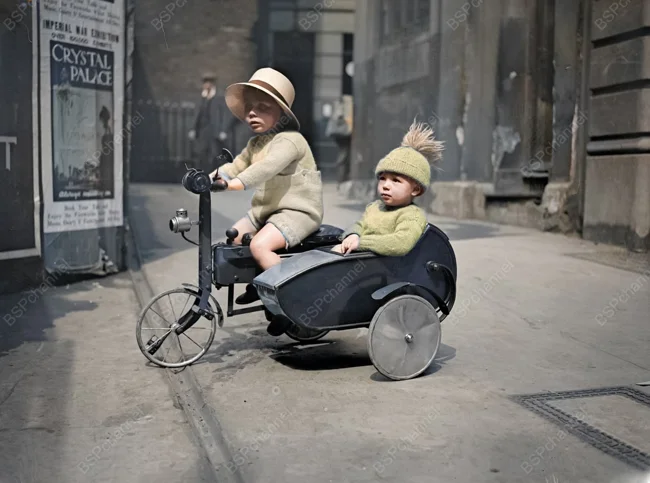
Members of the Southsea Model Yacht Club prepare their boats for the upcoming season. England, 1936. 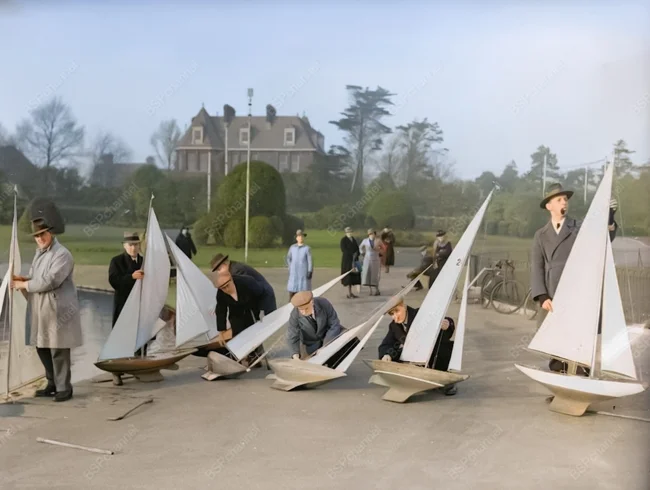
Photographer: E Phillips
A group of men unload straw from barges on the banks of the River Thames in London in 1938. 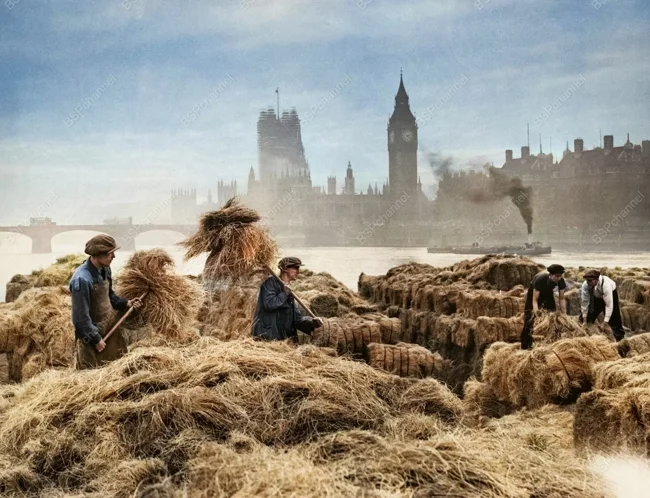
Little Gwen Bearn pulls her sled, loaded with snowballs, across London's Hampstead Heath. England, 1931. 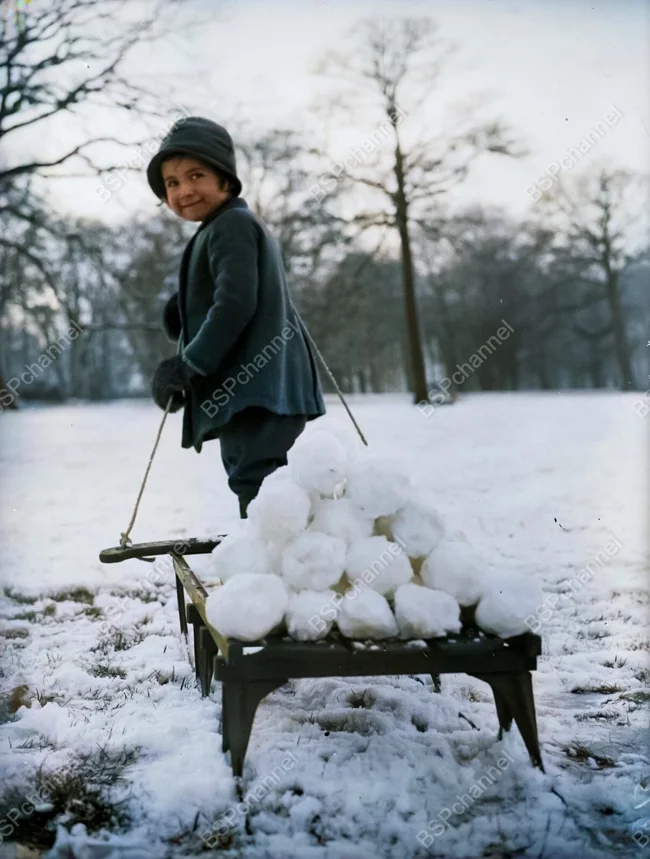
London, 1954. 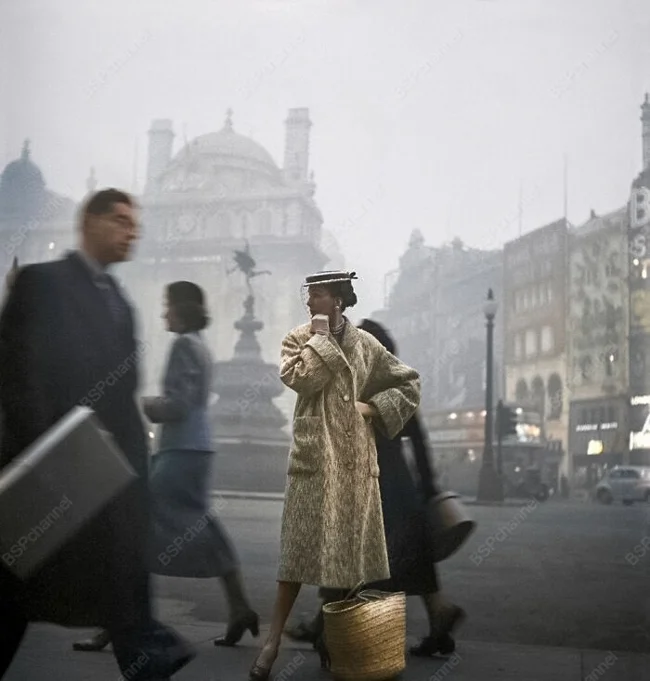
Photographer: Cecil Beaton
An export Lada on Westminster Bridge. London, 1977. 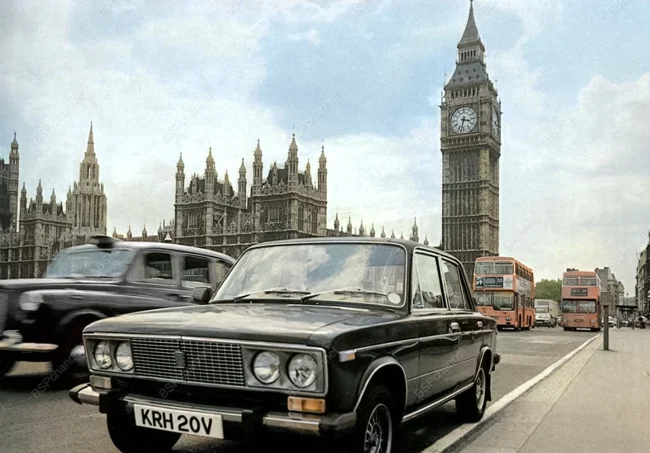
In the 1970s and 1980s, Lada cars became an unexpected phenomenon on European roads. What began as part of intergovernmental economic agreements between the USSR and Western countries evolved into a massive export industry, with tens of thousands of cars sold and even cult popularity.
Volga Automobile Plant vehicles—especially the VAZ-2101 (known as the Lada 1200), VAZ-2105, and the Niva SUV—were exported to more than 50 countries, including Great Britain, France, Belgium, Finland, and even Italy, the birthplace of Fiat, whose chassis formed the basis for the first "Kopeyka."
They were sold under the Lada brand because the name "Zhiguli" was difficult for foreigners to pronounce and, in some countries, evoked undesirable associations, such as the Italian word "gigolo."
The key to Lada's success was simple: low price—significantly cheaper than European equivalents; low maintenance—the cars could withstand poor roads and harsh winters, going for long periods without repair; and high repairability—any mechanic could fix them with minimal tools.
Amid the oil crises of the 1970s and rising fuel and car prices, Lada became the ideal budget solution. In the UK, for example, the Lada Riva cost almost half as much as a basic Ford or Opel, making it popular among students, retirees, and families on a budget.
Starting in the late 1990s, demand for Ladas in Europe began to decline rapidly. Outdated models failed to meet increasingly stringent environmental and safety requirements. The emergence of modern, comfortable, and technologically advanced cars from South Korea, Japan, and Eastern Europe finally ousted Soviet cars from the market.
A childhood in the Glasgow slums. Scotland, 1970. 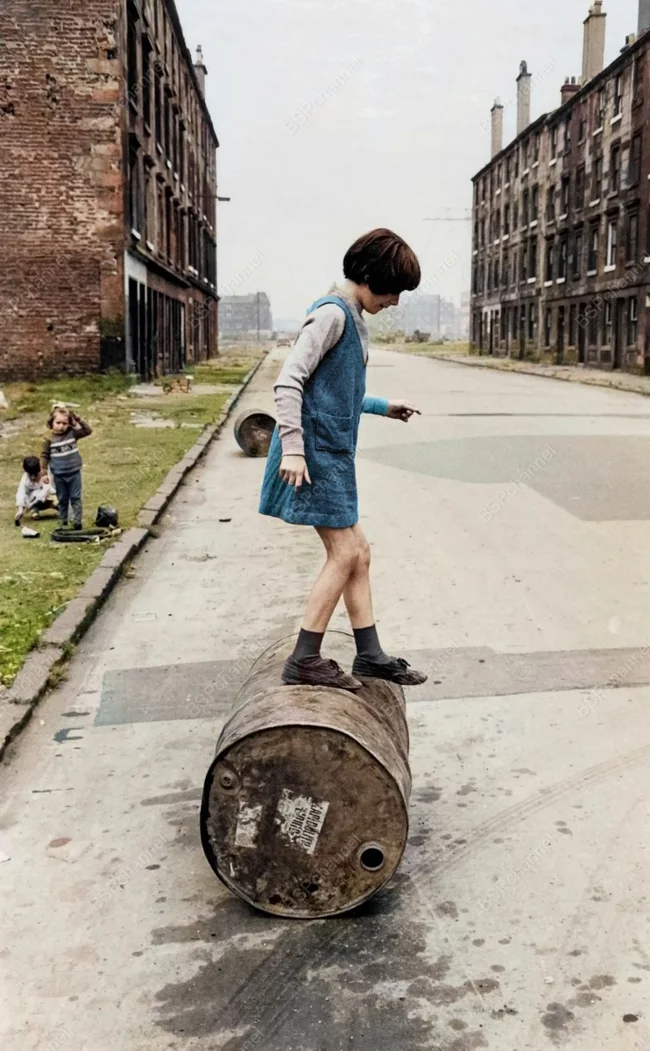
Photographer: Harold Chapman
Girls in short skirts parade through the streets of London, holding signs in support of miniskirts, 1966. 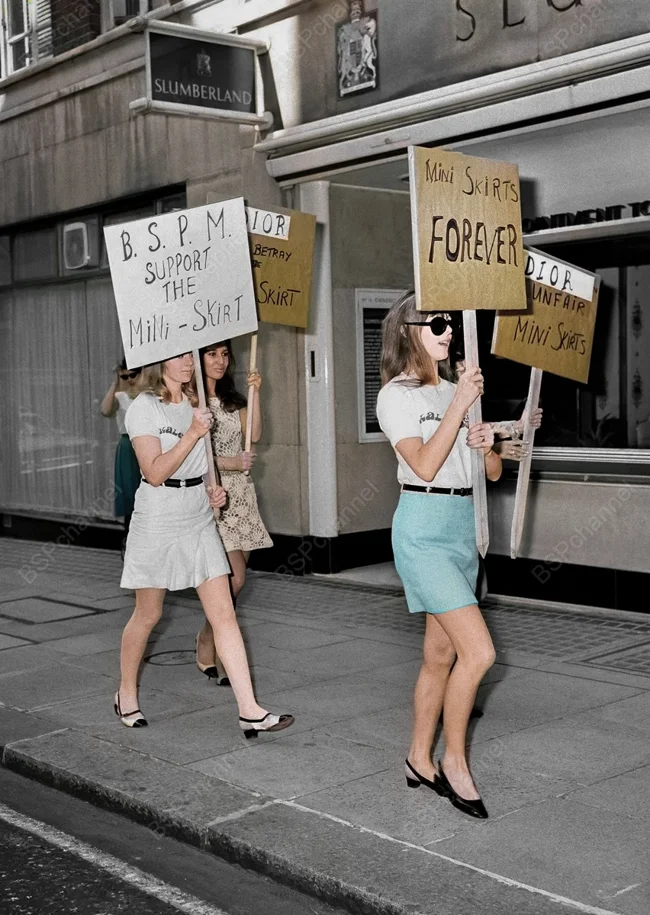
This wasn't just a style demonstration, but a genuine fashion event, organized in support of the revolutionary 1960s trend—the miniskirt, popularized by the legendary designer Mary Quant. Skirts that reached above the knee shocked conservative society, but young people embraced them as a symbol of freedom, boldness, and a new feminine image. The demonstrators proudly advocated for their right to choose their own clothing, declaring, "Short skirts are progress!"
A woman with an armful of daffodils at Covent Garden Market, London, 1950. 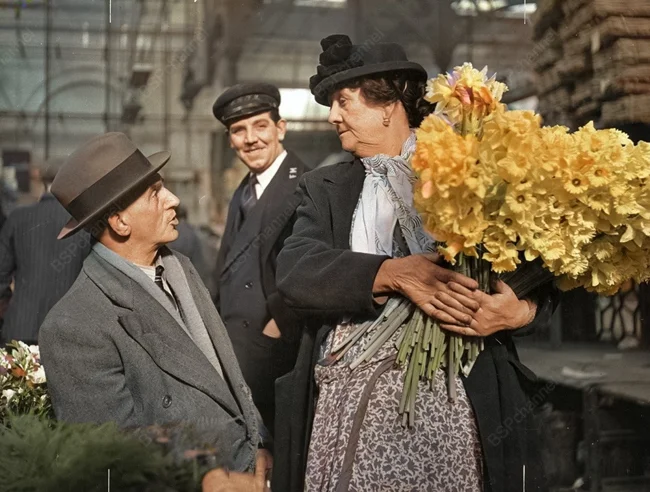
Photographer: Bert Hardy
One-Man Band. England, Kent, 1953. 